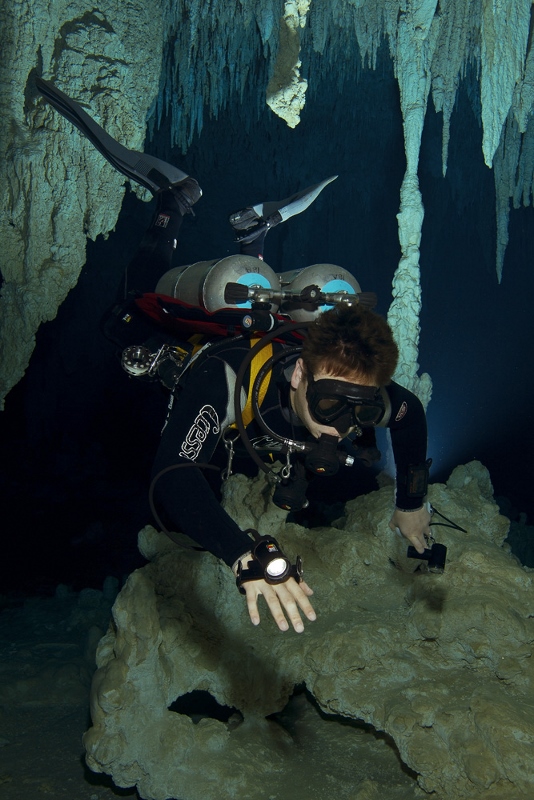(Warning, an opinion follows below....) :)
I’ve seen all too often what would normally be a very clearheaded and careful cave diver turn into a complete mess with a camera or video gear in hand. Things like buoyancy and buddy awareness are forgotten. The focus is lost on the most important parts of cave diving and instead the focus shifts to simply operating the camera. This recipe for disaster has led to fatalities. In order to prevent these tragedies and learn how to shoot beautiful images in submerged caves you must first learn how to dive to perfection in the overhead environment.
Those looking to undertake underwater cave photography should realize that we still have all the usual concerns and tasks as cave divers but we have also added an entire extra set of complications and risks while shooting in caves. Shooting images in the cave environment can be wonderful and fulfilling if you are inclined to try. Images are a helpful tool to show the general public why we love doing what we do and why they should care to protect these places, plus it’s just amazing to show your friends and family why you spend so much of your hard earned money to venture underground and underwater. Nevertheless, the extra task loading of carrying photo gear on a cave dive can become a problem and it’s important to remember we are first and foremost cave divers before we are photographers. We must also be knowing and ready to take on the extra risk involved.
I personally don’t like bringing a camera into a cave unless I’ve been in that cave before without the camera. I like to take my time, get to know the cave and scout out spots that might have potential to be a good place for a photo opportunity. Swimming around in the cave gets me familiar with the passages so I can keep my bearing for where I am in the cave at all times and where and how the line runs. I swim around in the areas I feel might be great locations and check for things like silt, the condition of the line in the area, and familiar landmarks that will help me remember the location for the next time I come back with a model and camera gear. This gets me prepared in advance to spend some time in this spot to get the shot I want to get.
Many great opportunities for photos exist in the first 500 feet of any given cave yet are so often passed by. Carrying a camera during the entire dive may seem like a great idea at first, after all, you’ll get to catch the entire dive on camera. However carrying a large camera housing with strobes over distance can be exhausting and keeping your eyes peeled to the camera can easily get you lost, tangled in the line, or distracted if an emergency situation were to occur. Another thing to think about is flow. If you think the flow in Ginnie, Little River or similar sites is strong while swimming without a camera, you may want to reconsider before you try to haul any amount of fragile photo gear through the cave. You could easily end up damaging the equipment or even worse, endangering yourself.
Take your time to perfect your skills as a cave diver and get to know the caves; situational awareness is an imperative skill while undertaking photography in this setting. Perfect factors like buoyancy and sac rate, and be familiar with your photo equipment before you enter the cave. Know where you are and what is going on at all times while on the dive, photo gear or not! It could be the difference between coming back with some fantastic shots and not coming back at all.
